I enjoy quite a lot looking at the depiction of rapiers in the plates of Capoferro and Giganti, or even at the earlier sideswords shown in Viggiani. I like trying to visualise the hilts and how they would actually look in reality. Multiple types can be inferred, although none with certainty. In particular, I like the design where outside sweeps join in to form a spiral, or a screw-like hilt (edit: or coil like).



I saw this type of hilt being done beautifully by Arms & Armor on a custom work showcased on their Facebook page. And I know that Balefire Blades has done at least two pieces in this style, a rapier and a sidesword.
All this led me a while back to ask Black Fencer to do my first rapier trainer in this style. I think they did a great job with my semi-custom request. I’ll know more, and probably showcase it in a separated post, once I receive it. It is still in transit as I write this post. I hope to use my first rapier and dagger set (seen just below in a production photo before shipping) to learn how to actually use a 114cm long blade.
With all these in mind, I want to explore next the screw-like swept hilt rapiers housed in museums, or that passed through auction houses. The only criteria is a hilt that has a side-ring port, an outer sweep that joins the side ring to the crossguard, and another outer sweep that joins the crossguard to the knuckle bow. I will even relax the criteria a little, as long as the overall screw-like swept hilt look is present.
Philadelphia Museum of Art Rapier
From c.1590-1600, measuring 115.4cm in total length, this rapier has a silver decorated hilt and an iron and copper wire grip. The blade is 99.6cm long and 2.5cm wide. The length of the quillons is given at 20.3cm.
The Wallace Collection Spanish Rapier
Made c.1590, by Gonzalo Simón (active before 1615) in Toledo, Spain. The total length is 120.4cm, the quillons are 21.1cm in width, and the weight is only 1155g. The blade is 105.5cm long and 2cm wide, resulting in a balance point of only 10 cm forward of the quillon block. I estimate from photos the grip to be 7.5cm long.
The Wallace Collection German Rapier
Made c.1600, in Solingen, Germany. The total length is 119.3cm, and the weight is 1350g. The blade is 103.4cm long and 1.8cm wide. I estimate from photos the grip to be 9.3cm long, showing the predisposition of German rapiers towards longer grips.
SDK Museum Dresden Rapier
Attributed to Anton Schuch from Dresden, with a blade made in Solingen in the second half of the 16th century. It has silver etchings, a silver wired grip and had a surviving scabbard. It weighs 1592g, has a total length of 126.6cm, with a 112.2cm long blade.
SKD Museum Italian Rapier
Italian rapier from Milan, with a Solingen blade, from around 1555-1560. Attributed to Peter Wirsberg (around 1560) as bladesmith and Diego Aias (around 1540) as goldsmith, probably for the hilt which contains gold and silver. The 1417g rapier has a total length of 118.8cm, with a 104cm long blade.
The Met British Rapier
This British rapier from c.1610–20 has a Spanish blade. The weight is 1247.4g, the total length is 120.2cm, and the blade is 103.5cm long.
The Met Italian Rapier
This Italian rapier from c.1565–75 has a weight of 1417.5g, a total length of 124.8cm, and a blade 110.8cm long.
KHM Spanish Rapier
Spanish rapier made in Toledo around the 17th century by Juan Martinez d. J. At 1600g in weight, this is not a light piece. The total length is 131cm. While this hilt has a large side ring construction, due to the flow of the lines, we can also consider this to be a screw-like swept hilt, which is why I chose to include it here.
Victoria & Albert Museum German Rapier
Made c.1630 in Germany. This rapier has a total length of 120cm. Notice the simplicity of the hilt and pommel, contrasting the pierced blade. And while the grip wire is damaged, it does allow us to see the spiral shaped wood underneath. As above, due to the flow of the lines, we can consider this to be a screw-like swept hilt.
Sold by Czerny's Auction House 2019
From Germany with a Toledo blade, c.1600, with a 117cm total length.
Sold by Czerny's Auction House 2023
Except for the inscription "IHESVS VALENTIA" on the blade, no other details are provided.
Sold by Czerny's Auction House 2017
This Italian c.1600 rapier has the inscription "IN TE DOMINE SPERAVI" on the blade. The total length is given to be 118cm.
Sold by Bonhams London 2013
This composite rapier in the 1600 style has a blade around 101.6cm long with a fuller for the first 25.4cm The Maker's mark is a crown over R.
Sold by Wilkinson’s Auctioneers 2013
A 16th or 17th century rapier that has 113cm in total length.
Sold by Landshuter Rüstkammer 2021
German rapier c.1600-1630. The pierced blade has the inscription "SEBASTIAN HERNANDEZ - ME FECIT EN TOLEDO", indicating Toledo as the source for the blade. The flat fullered ricasso has a master's mark (No. 89/90) of Sebastian Hernandez stamped on both sides. The total length is 124.5cm.
A Final Thought
While the sharp reproduction from Arms & Armour, my choice for my trainer, and some of the illustrations from old manuscripts show no bottom quillon, a style that I like, this is in fact not supported by any of the antique pieces showcased here.
Bonus photos

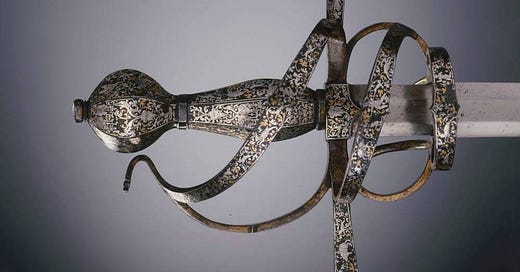



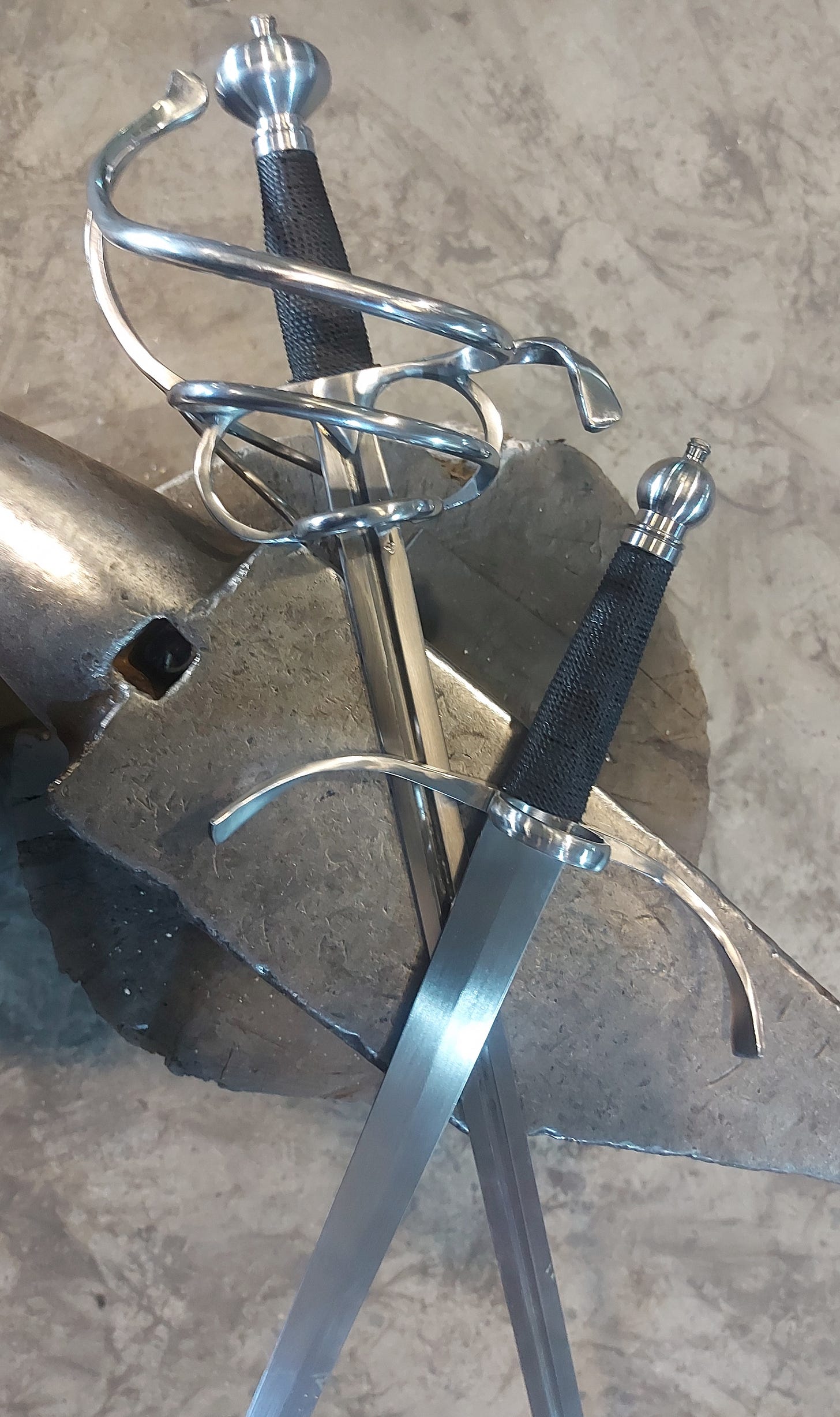
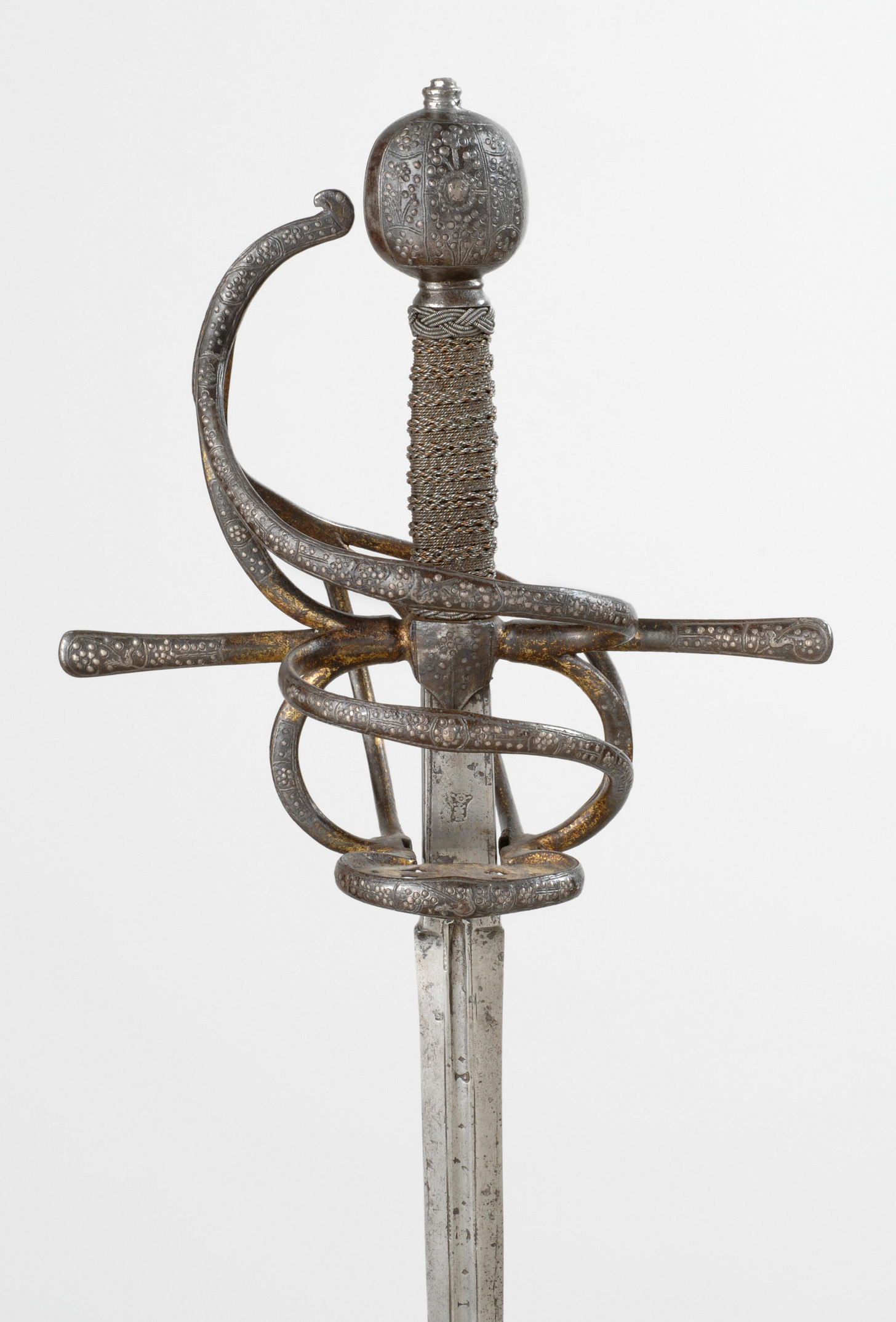

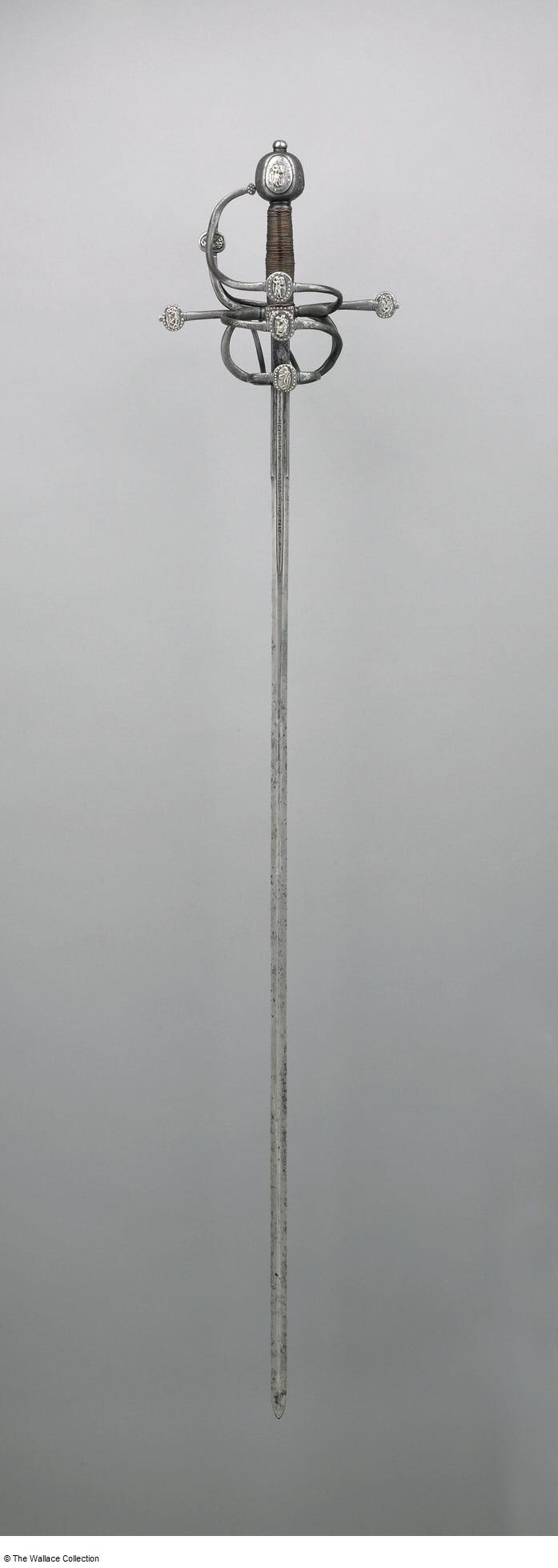

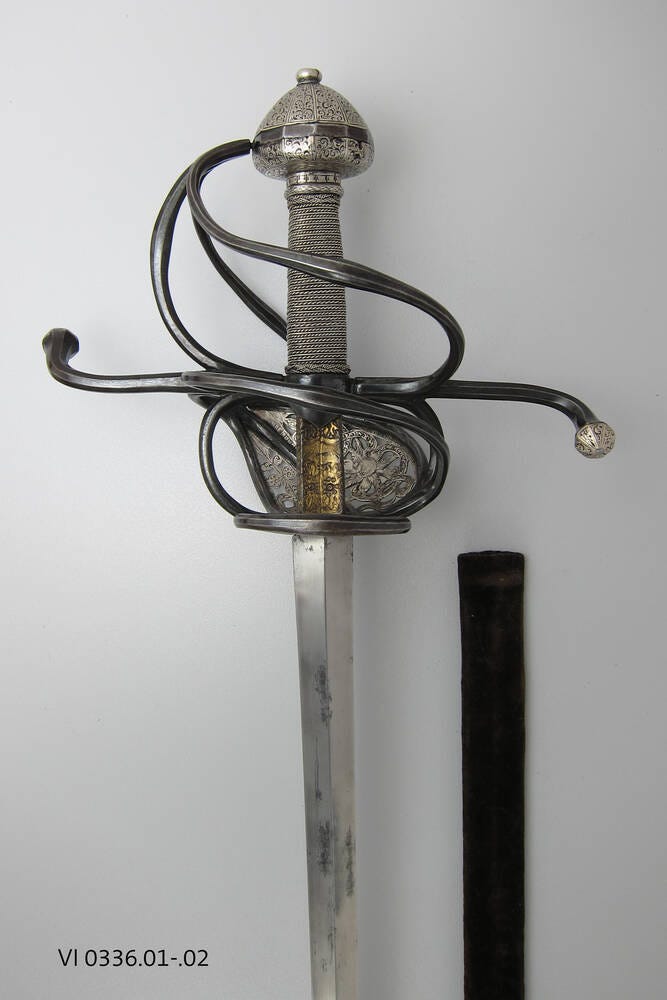
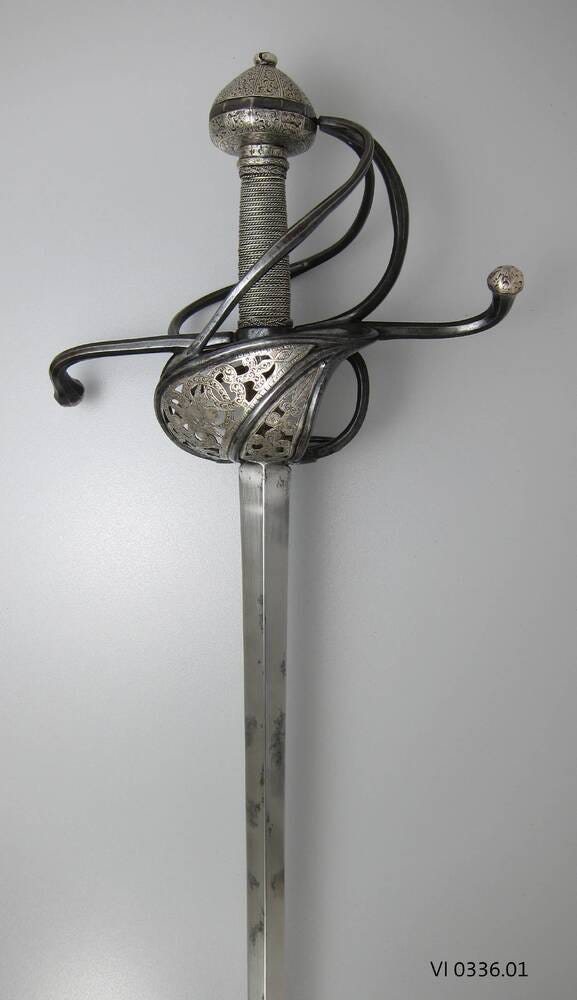
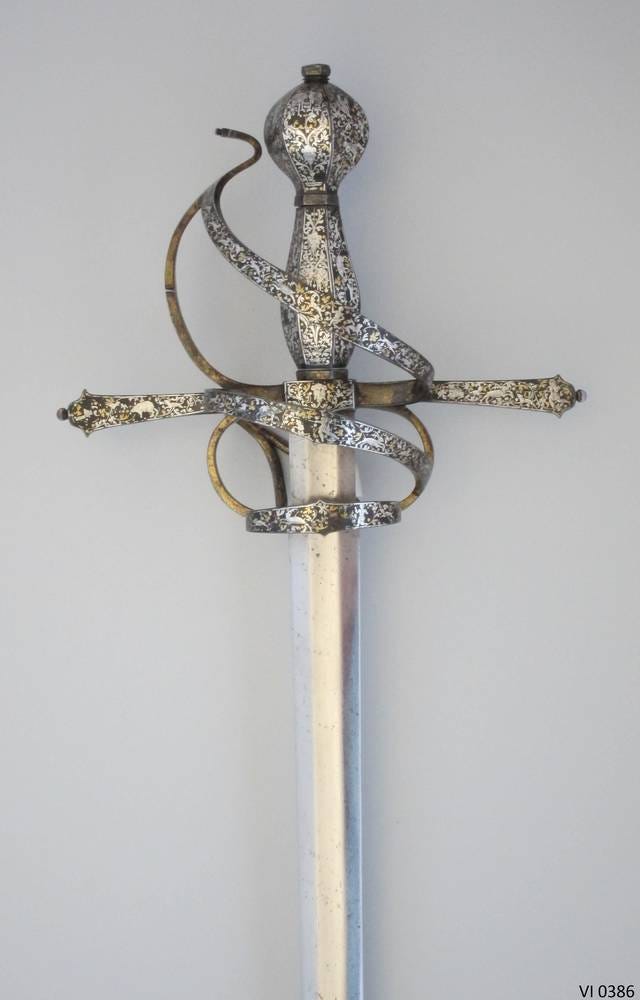


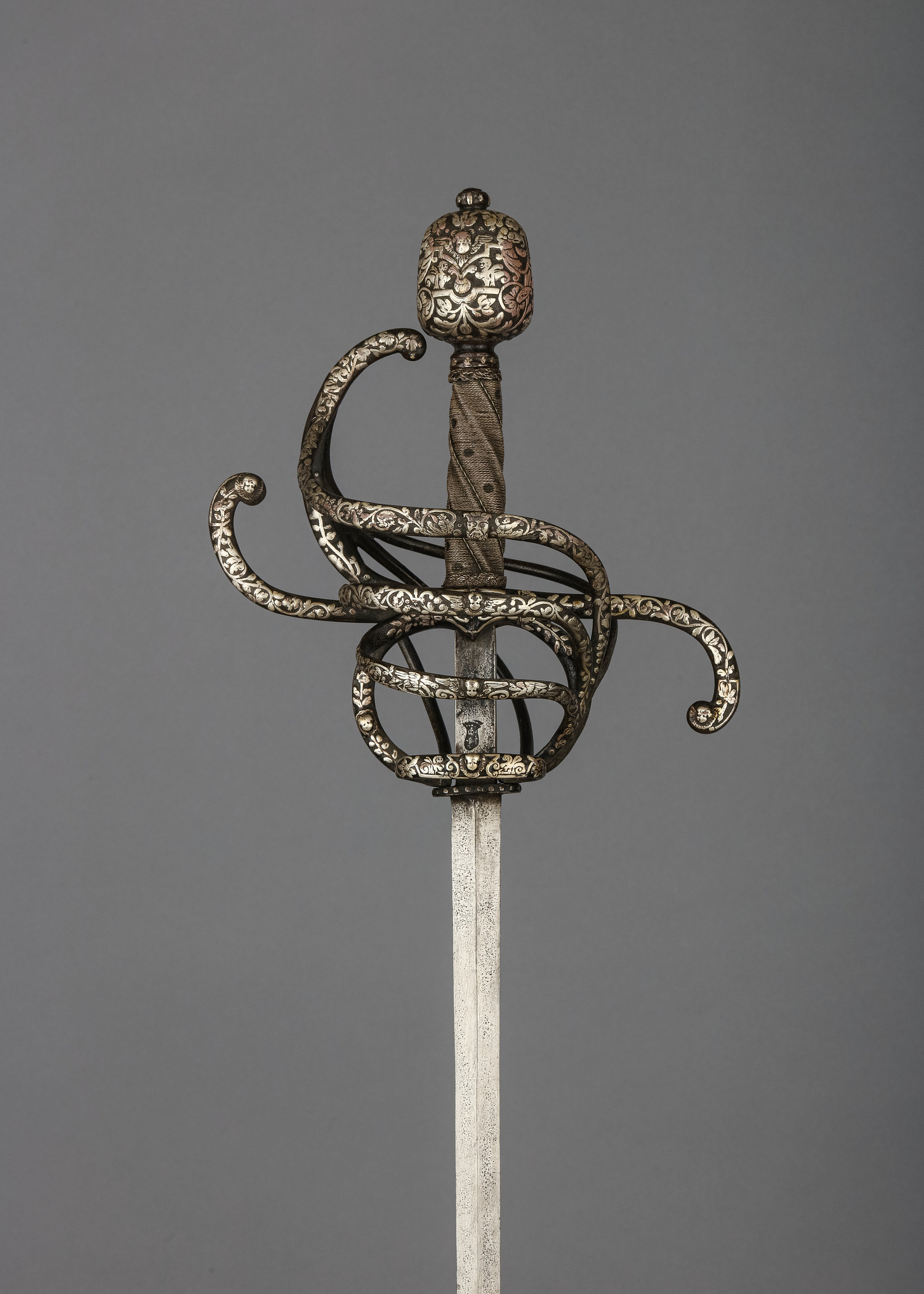
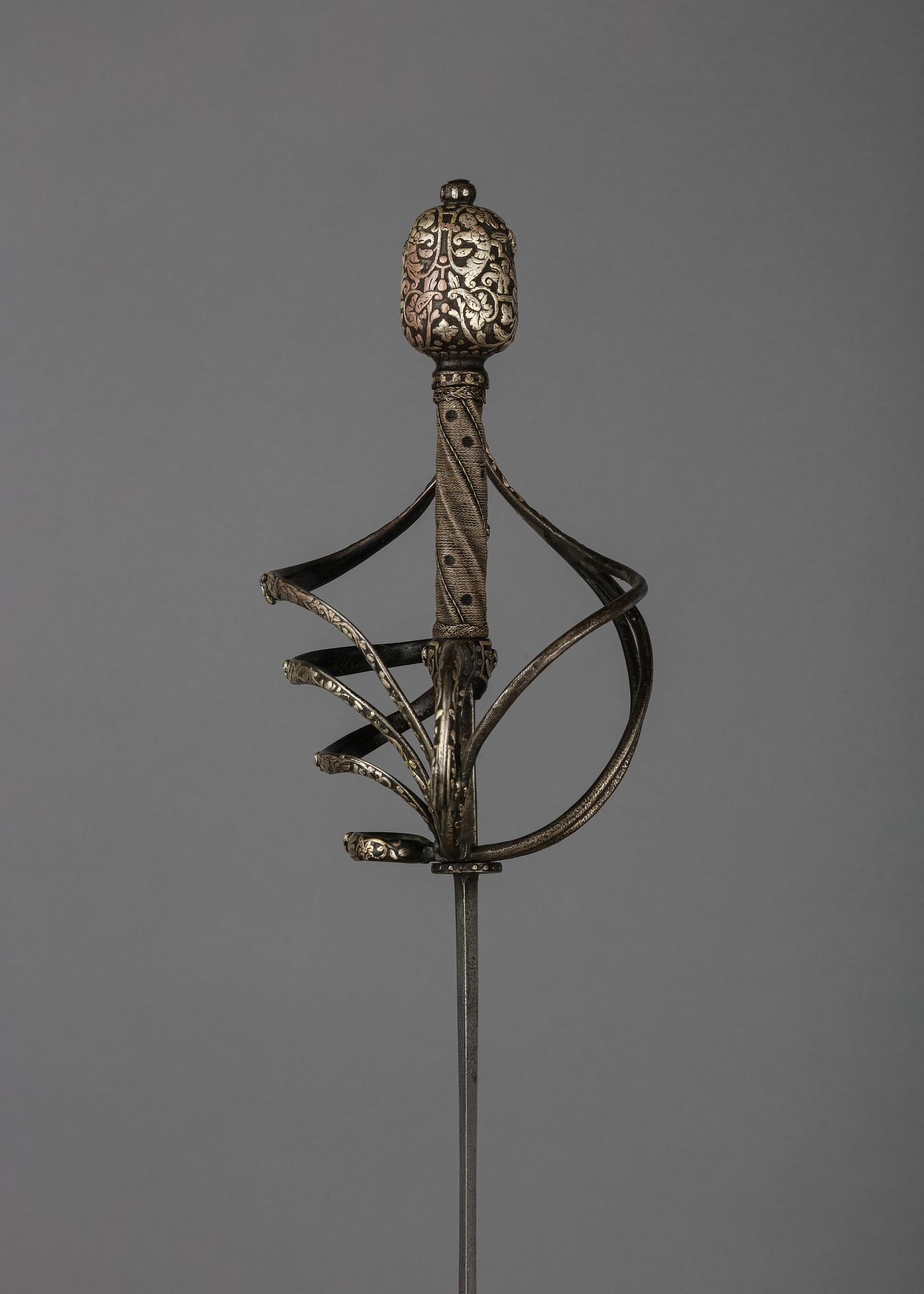
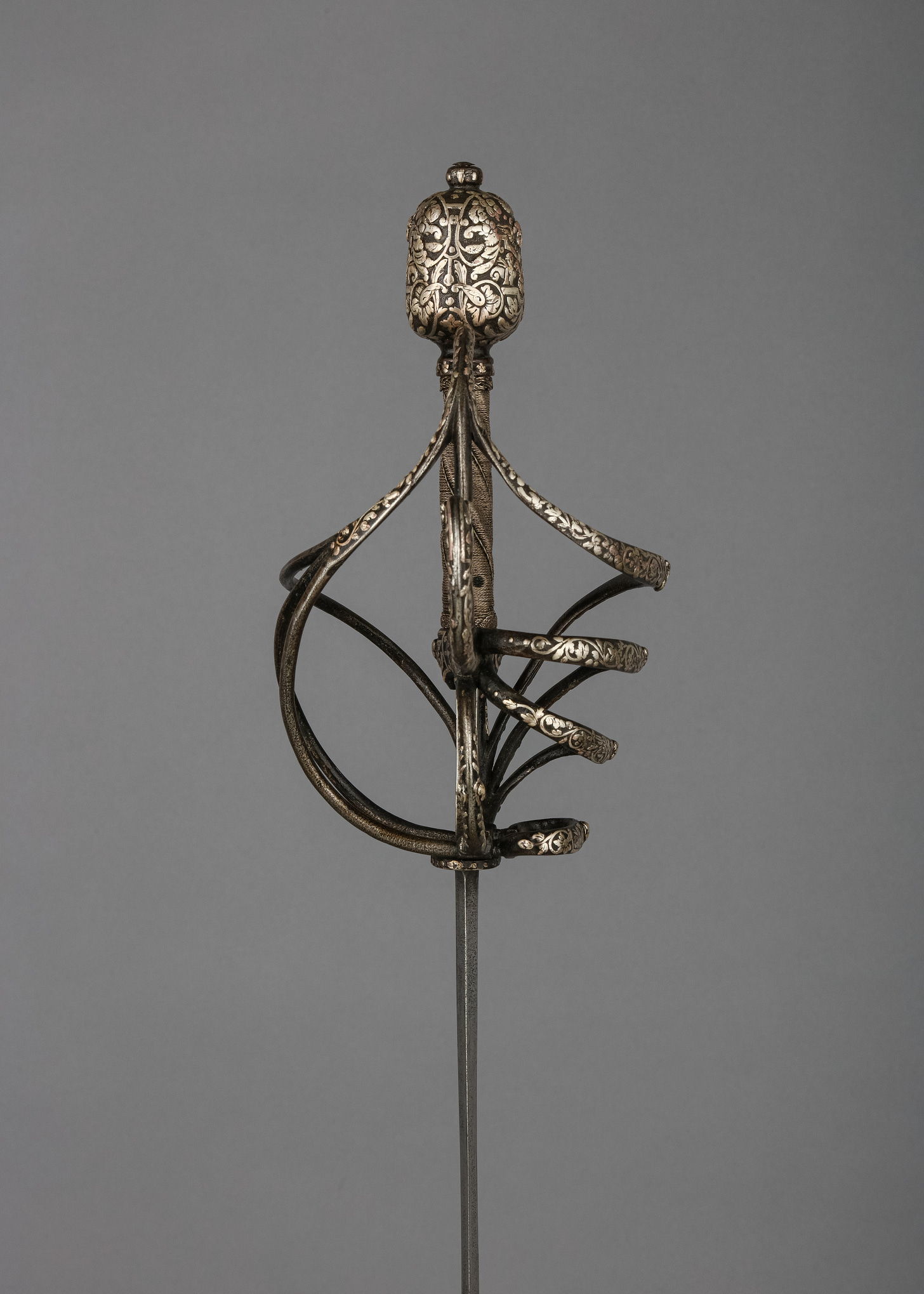
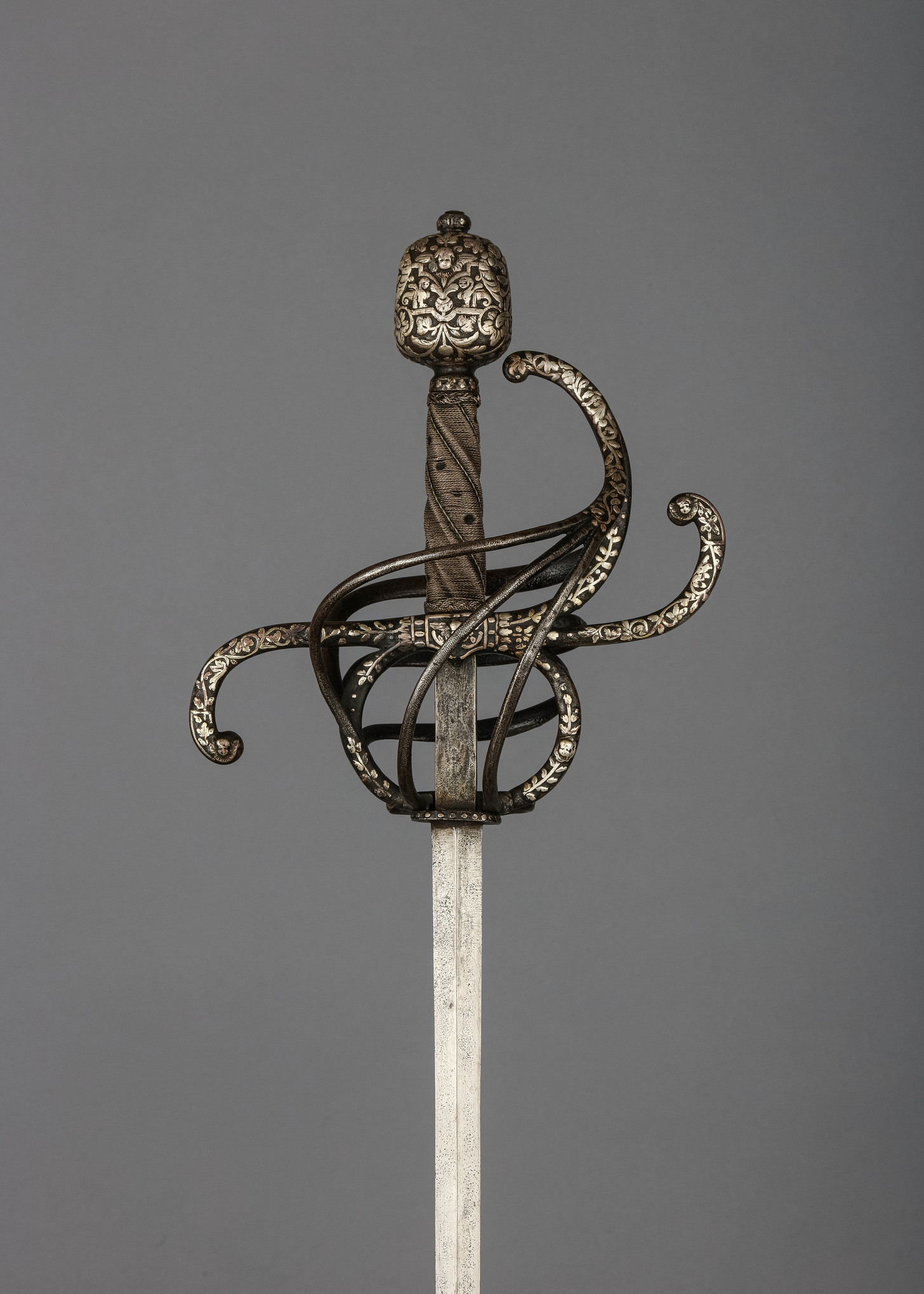



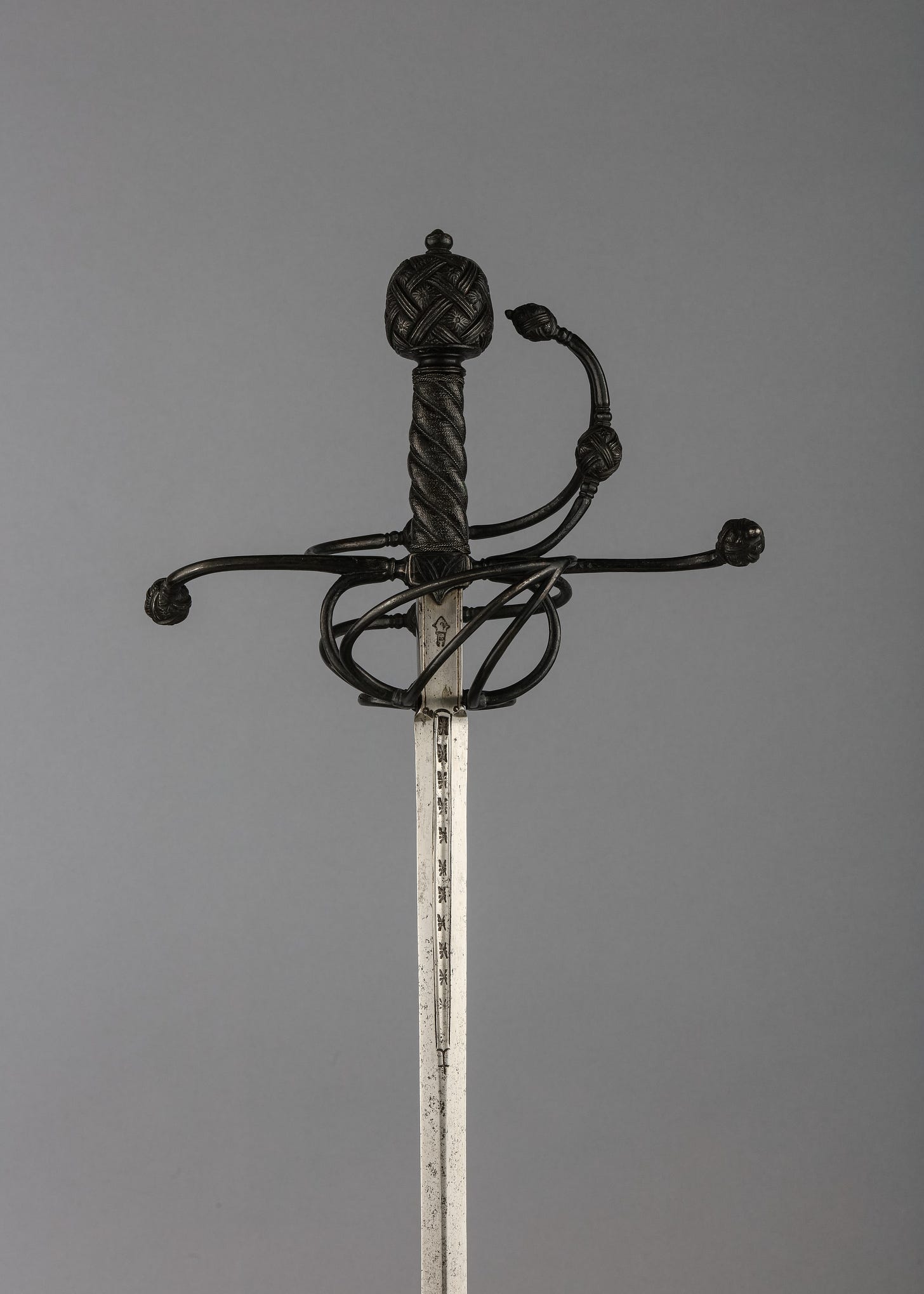
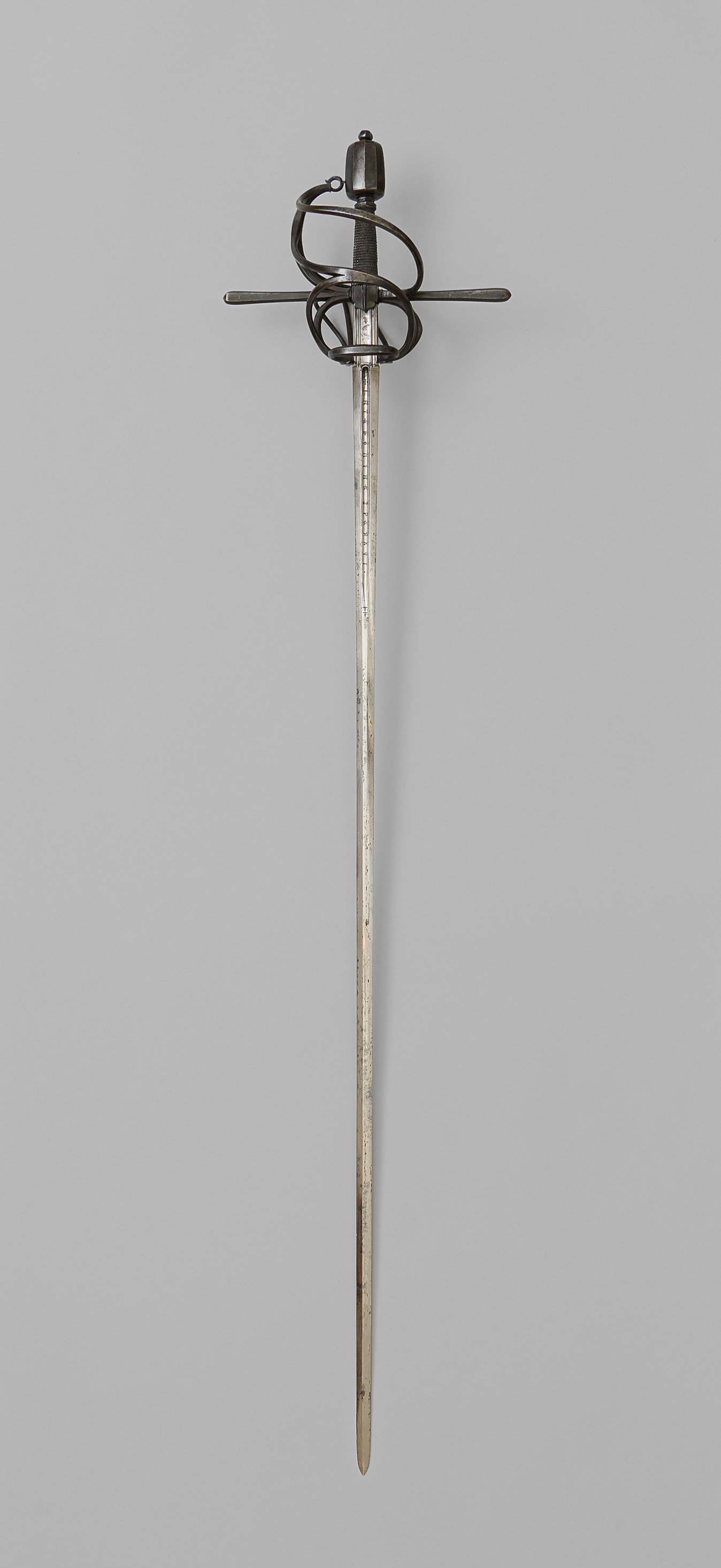

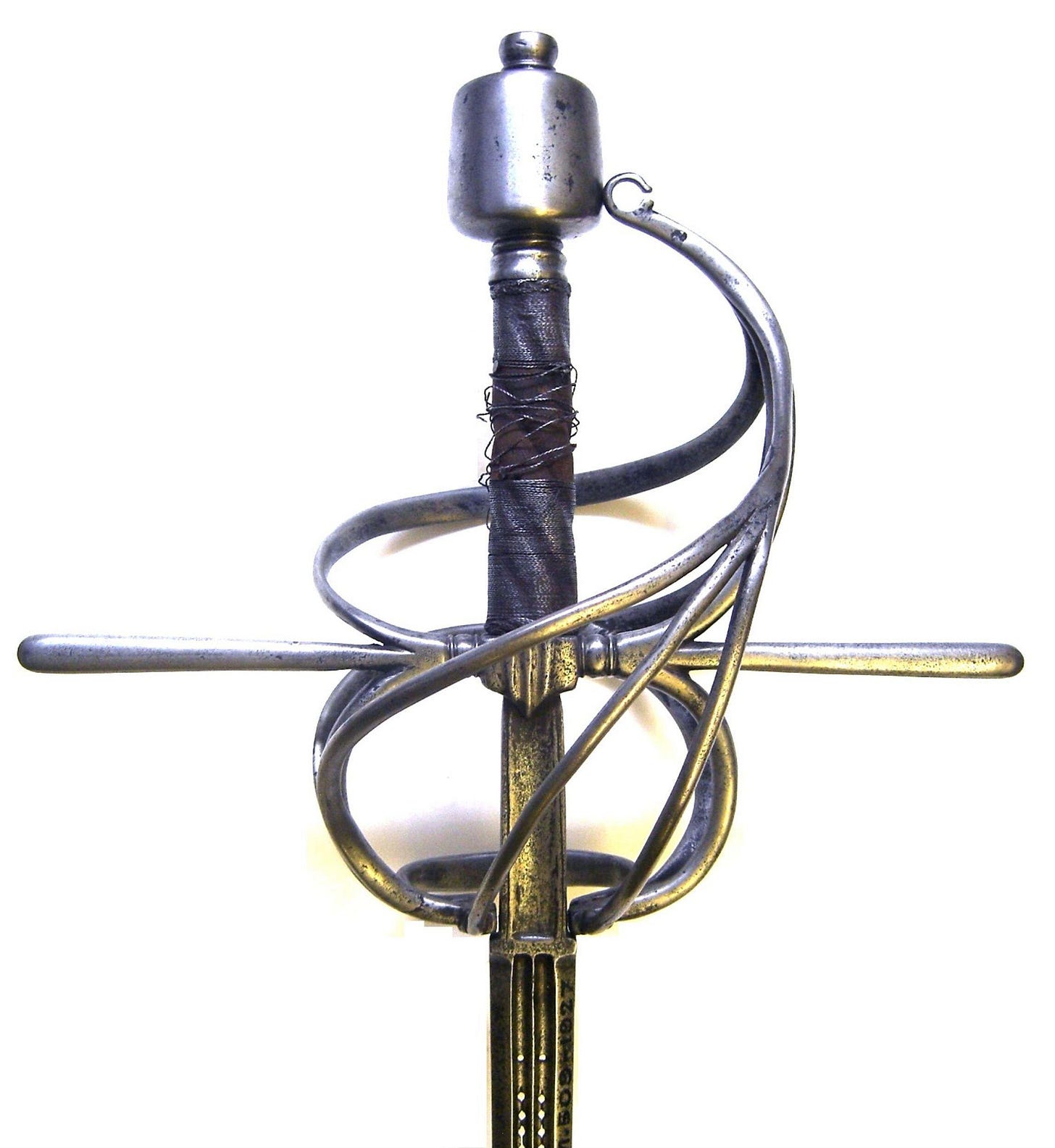

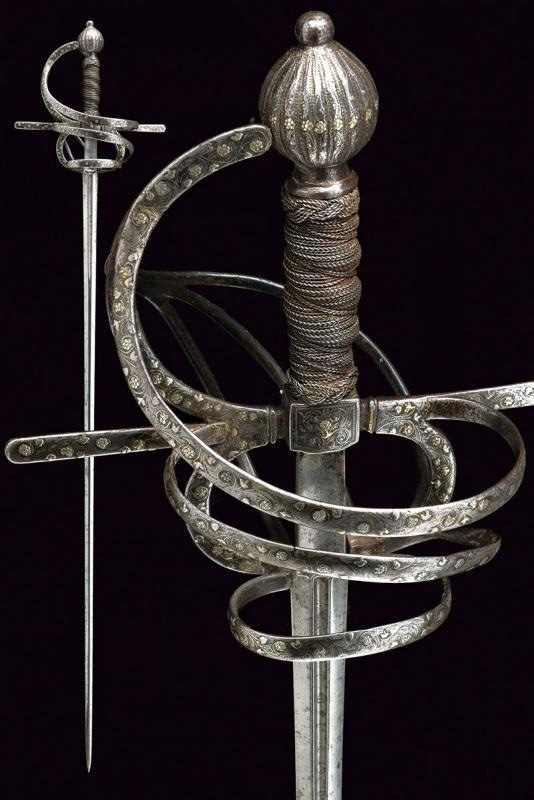
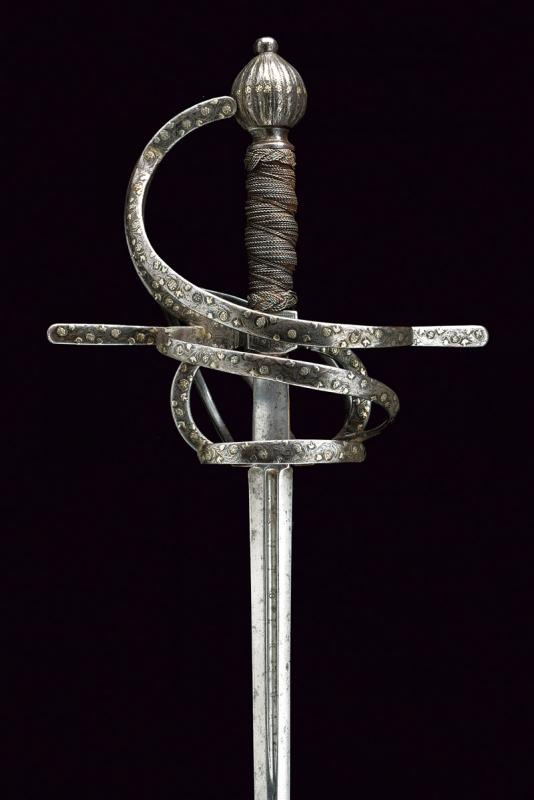
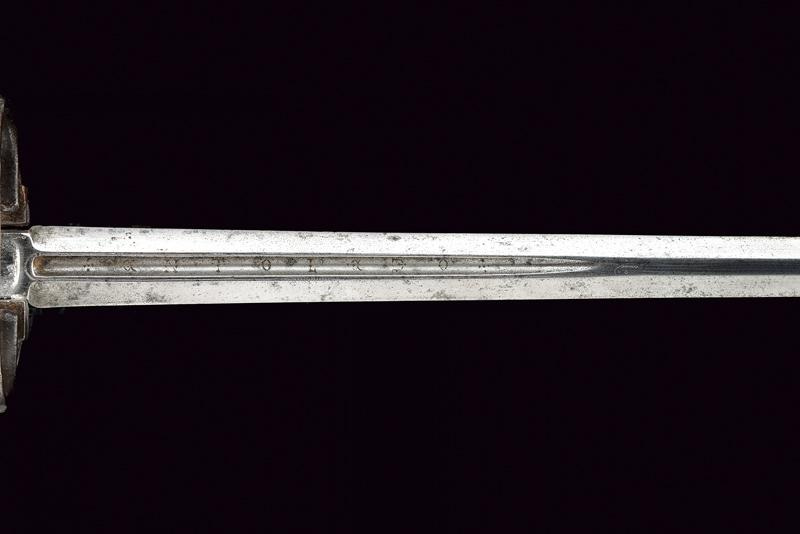


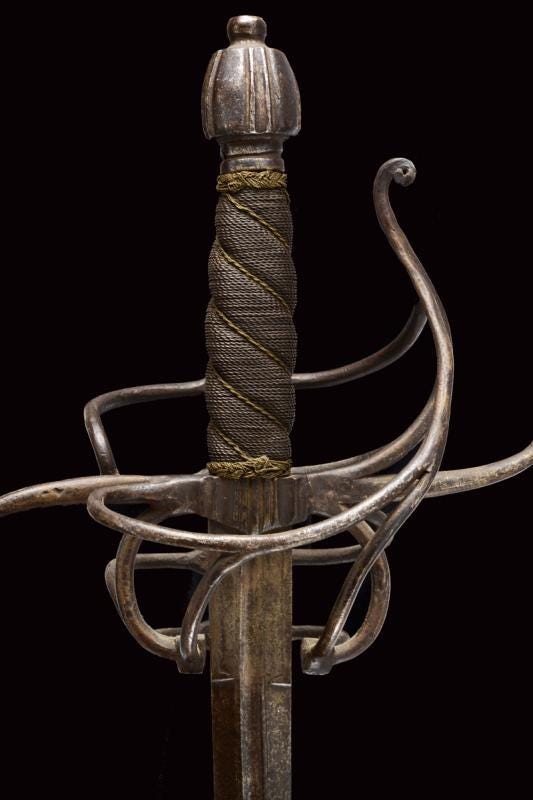

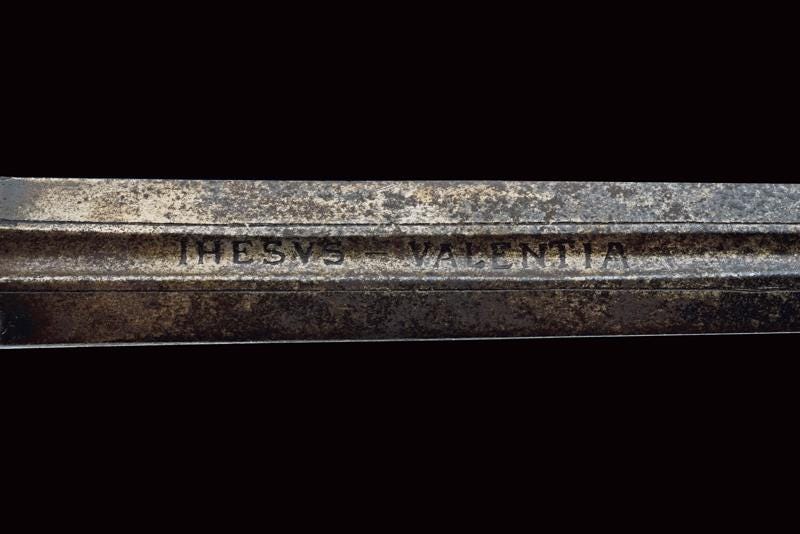

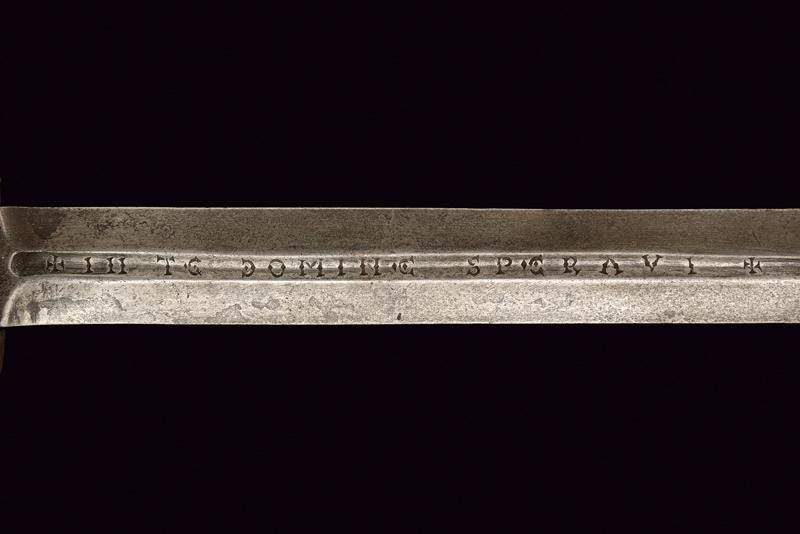
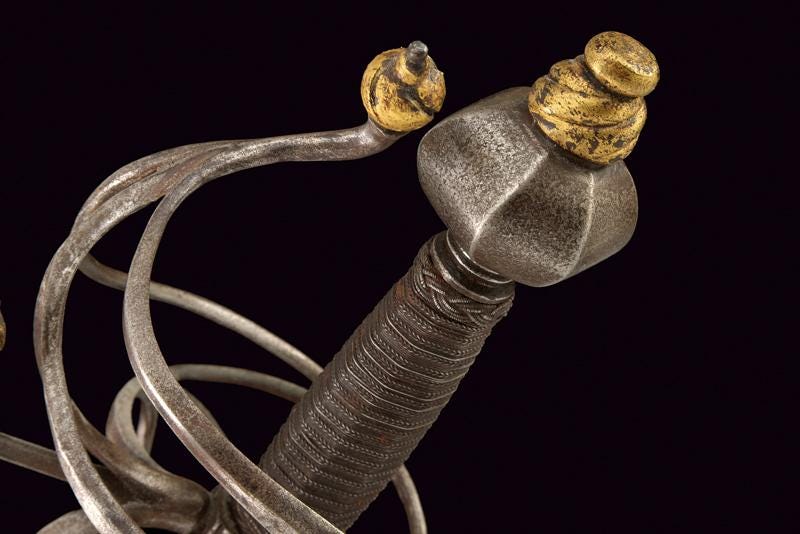

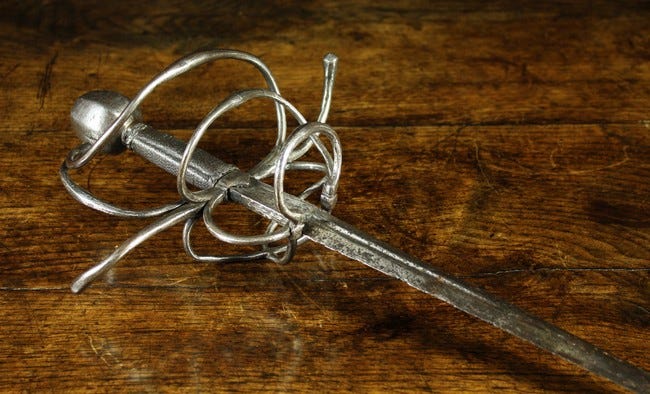



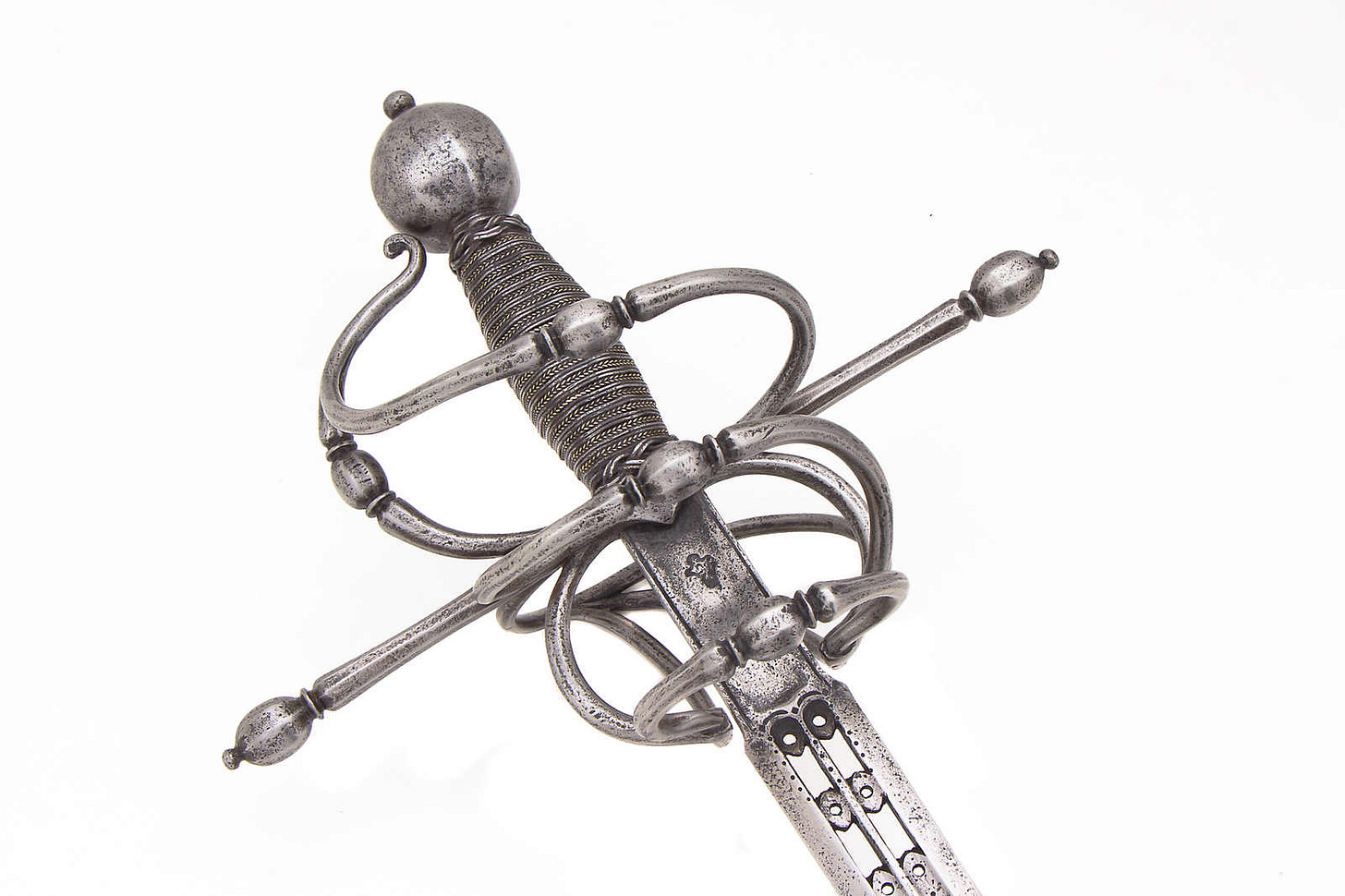

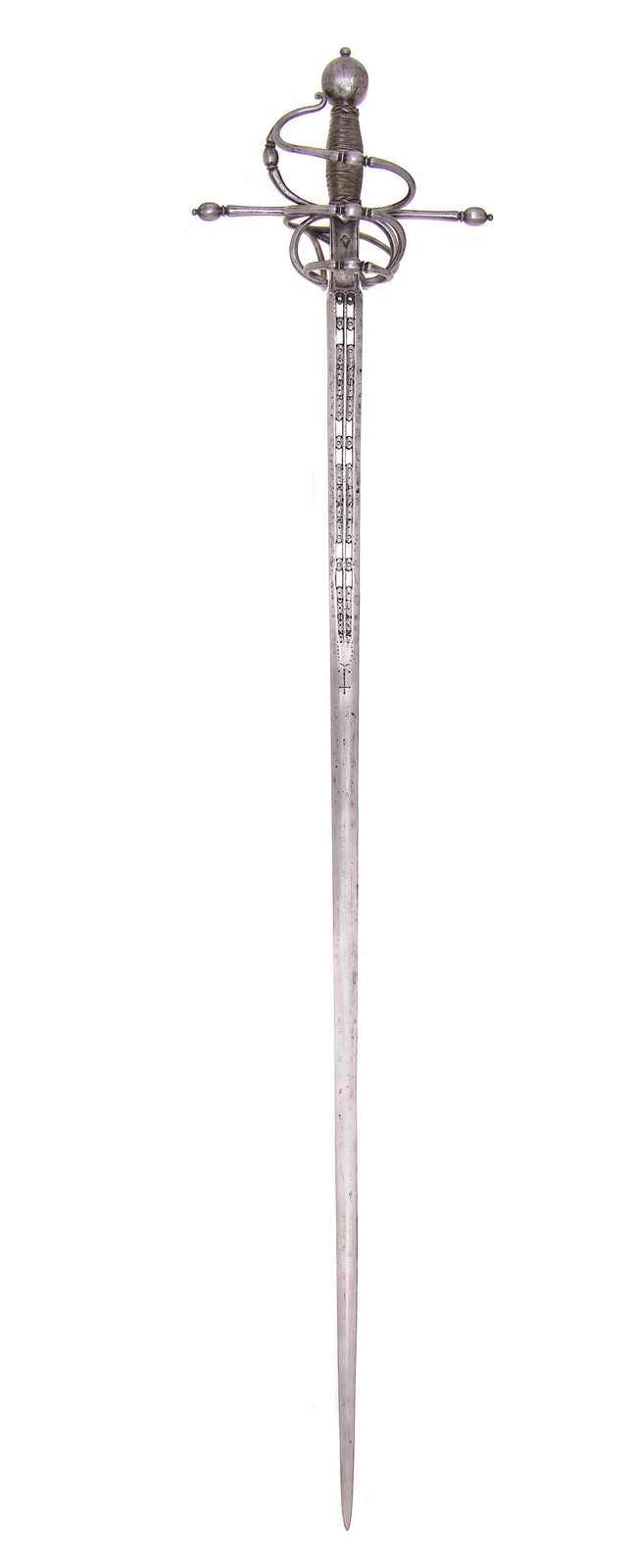
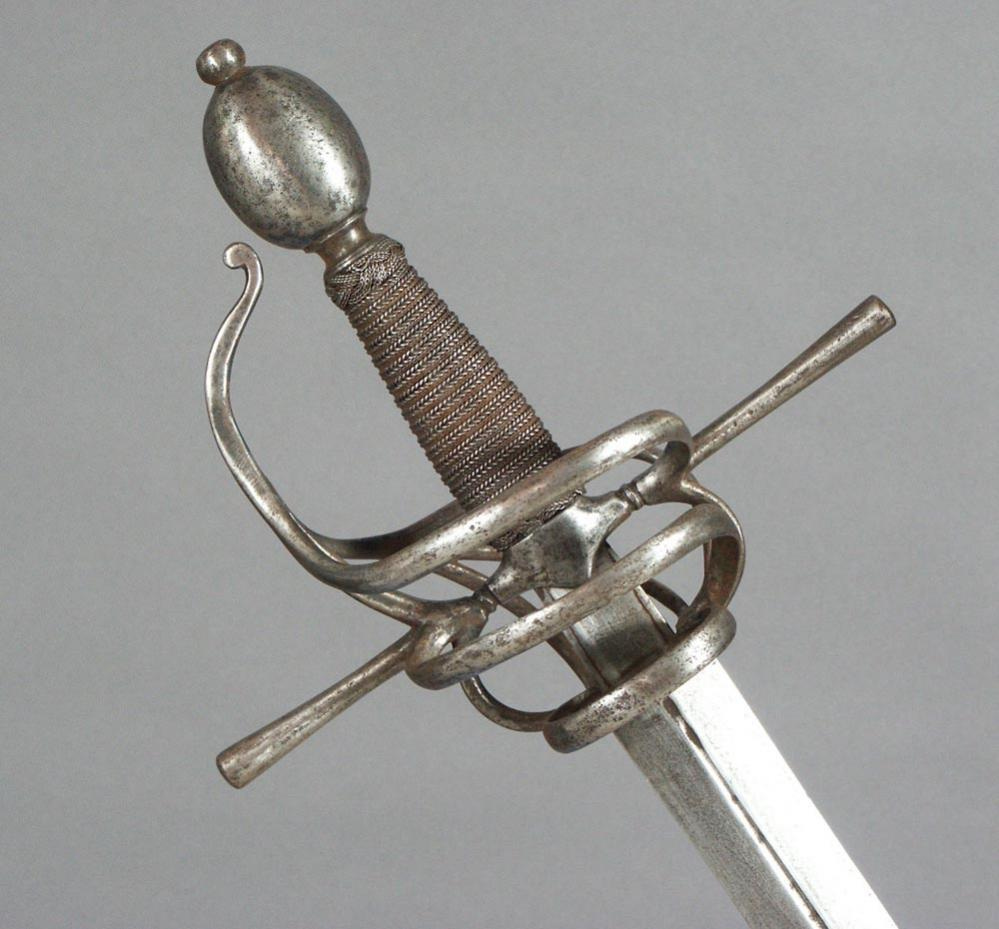

I love this style as well. It’s the only hilt style I really like that I don’t have an example of. Hmmm…